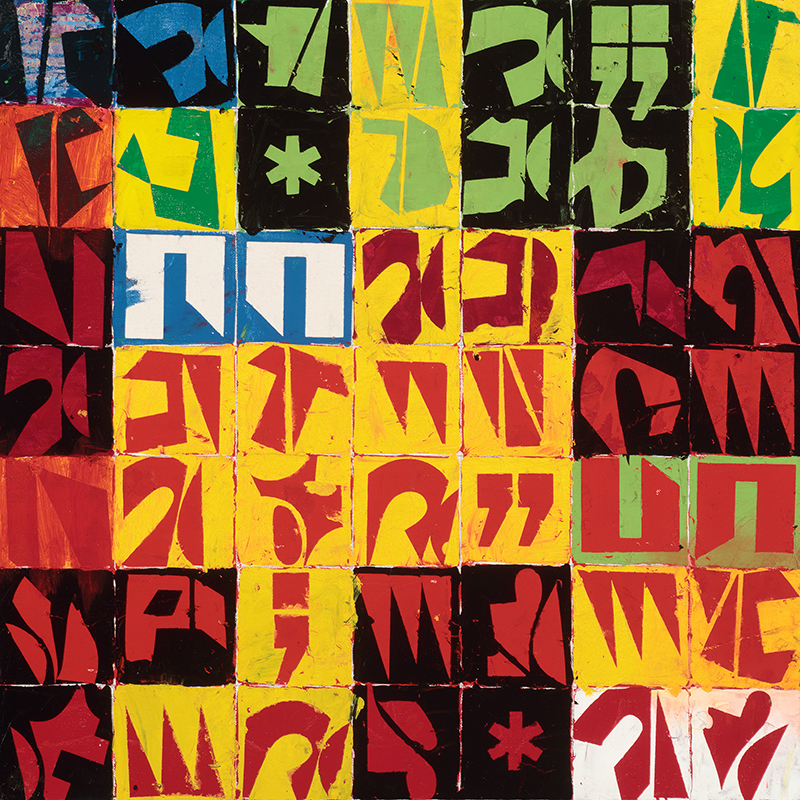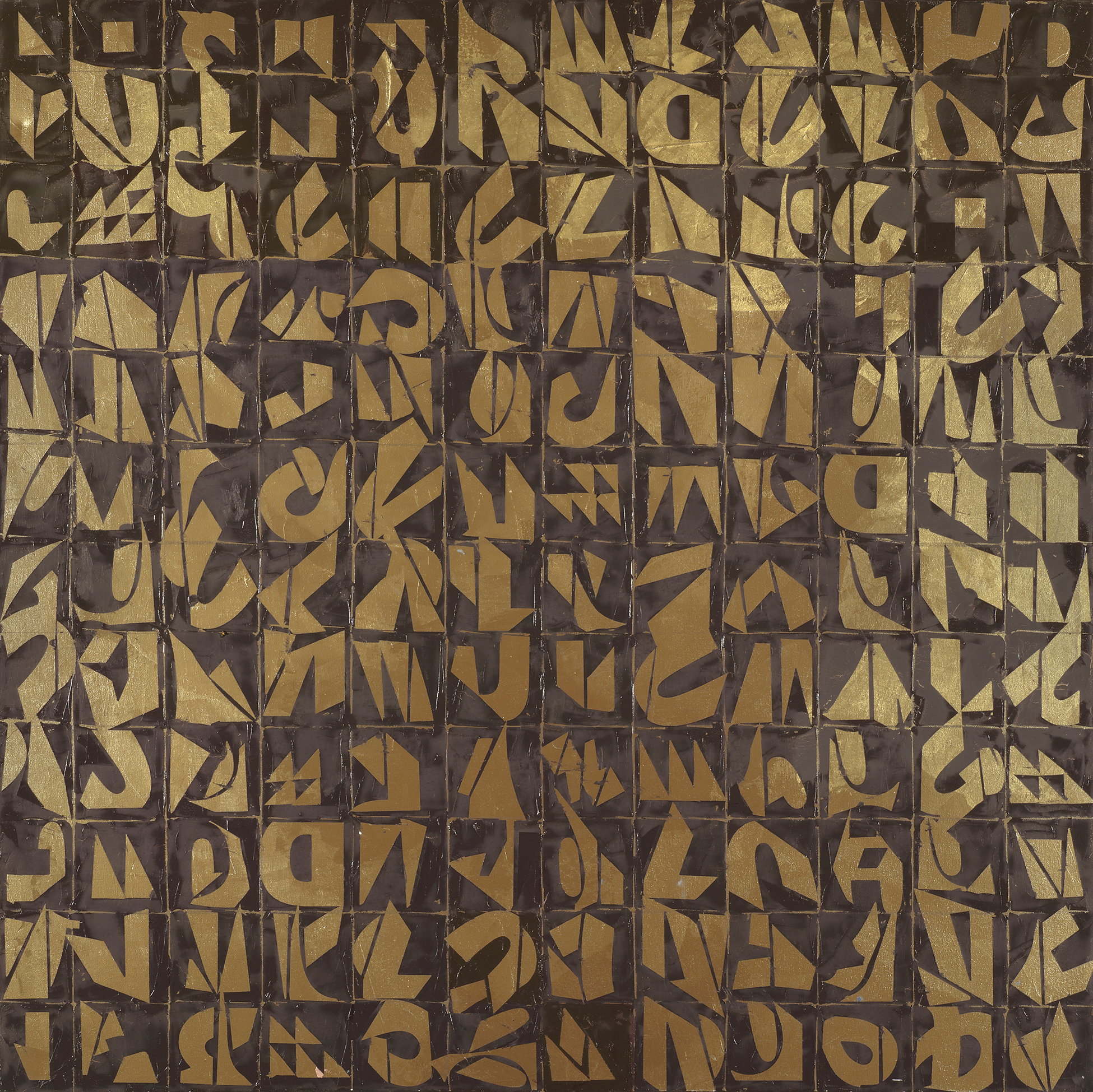An internationally recognized artist, Bonifacho has a consistent presence in North American commercial galleries and non-profit galleries and museums. His work is in major corporate collections, museums and private collections internationaly. His work expresses a tremendous vitality and love of intense emotional colour.
Bonifacho’s new series explores these tensions between the logical, linear scripting of virus programs and their capacity for destruction. In the simplest terms, he imitates the effects of computer viruses and worms by scrambling letters and messages in his large-scale oil paintings. His work carries the elegance of programming code. It also indicates the deep layers of chaos and confusion caused by viruses.
Talking about the intentions of his art practice, Bonifacho says:
I communicate and express essentially non-verbal thoughts and emotions abstractly, within the discipline of formalism – through colour and shape, gesture and surface. I work in the standard oil medium, applying it to large squares and rectangles of prepared canvas. Sometimes I use encaustic for its particular luminosity and tactility; occasionally I do shaped canvases, or mixed media constructions. As a relief from the intensity of prismatic colour, I periodically explore the singular qualities of geometry, surface, gesture and sgraffito, in metallic paints. Such decisions occur within the context of extended serial planning.
The source of my art is the comprehension and channelling of strong emotions stemming from observation, current events or epiphanic memory: thoughts of environmental devastation; or blatant injustice; or peak moments of optimism and ecstacy. I see subjective awareness as the fuel of creative fire, and for a sustained body of work the emotive energy must be profound. I ride these obsessive crests like a surfer, until they subside in my consciousness. One cannot artificially rehearse, buy or borrow this energy, which is one reason I cannot subscribe to popular generational or interest group issues of the day.
Aside from the technical facility of my work, an aspect in which I have confidence, the viewing of it by another person can be only formal and subjective – the emotion that drives me may be experienced by another as only a residue, the cooled lava of a molten flow. Dylan Thomas, a writer, referred conceptually to this emotion as “the force that through the green fuse drives the flower.”
Because my work is couched in formal terms, it may concomitantly stand or fall under formal critical scrutiny. Its critical mass, however, the flares and phantoms of my internal sensibilities, are unassailable. These emotions are the glue in the interstices that hold together the elements of form.







































































































